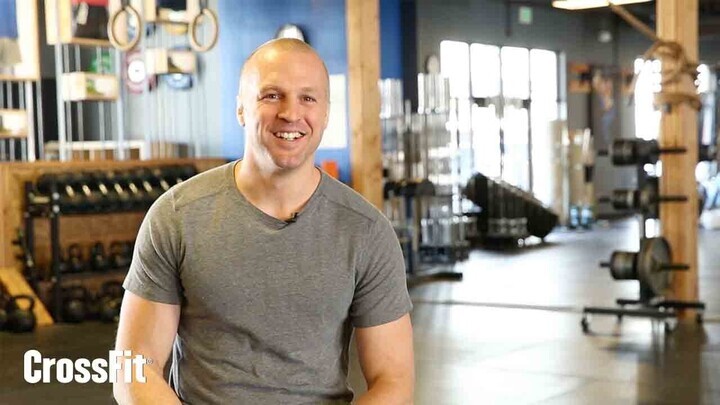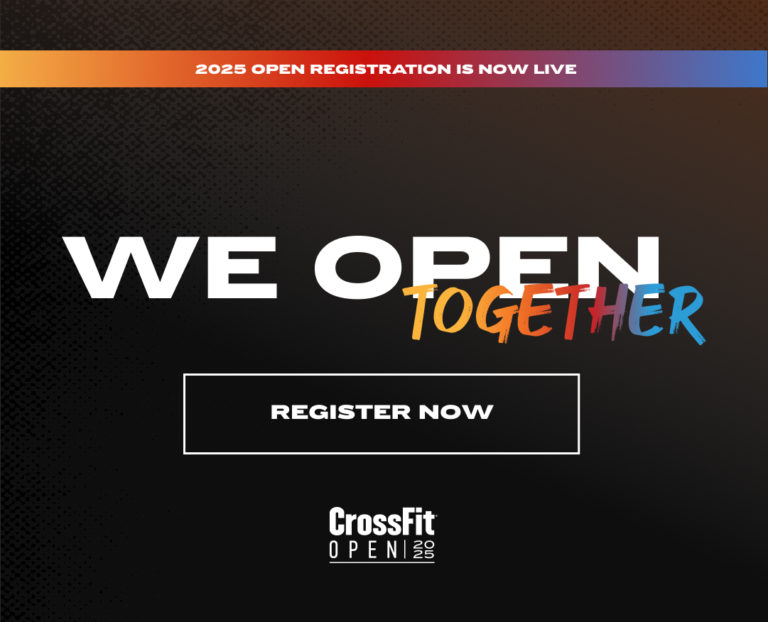Great coaches never stop learning. No matter how experienced you are, there’s always room to improve, and the best way to grow is by seeking feedback from those around you. That’s exactly what we witnessed at CrossFit Roots when Certified CrossFit Level 4 Coach and 15-year affiliate owner Nicole Christensen invited a brand-new 18-year-old Level 1 Trainer and long-time Roots athlete named Ben to shadow her during one of the gym’s wildest classes of the year — The 12 Days of CrossFit Roots Christmas workout.
This wasn’t a typical class. It was packed, loud, full of holiday chaos, and, by design, lacking the discerning and masterful coaching athletes are used to at the gym. Yet amidst the mayhem, Nicole controlled the class effortlessly and gave this coach-in-training mentorship everyone should be so lucky to have. (You can have it, by the way.)
From a lightning-fast warm-up to on-the-fly scaling decisions, she showed what it takes to command the floor while making every athlete feel supported. Watch this mentorship in action and see why learning in the trenches is the best way to develop as a coach.
As you watch this video, pay close attention to the dialogue between mentor and coach. This article is intended to highlight a few of these interactions I found extremely valuable for developing my own thought process for seeing and correcting, as well as strategies I can implement as a mentor when working with other coaches.
Set Expectations
This is often overlooked, but one role of the mentor is to set clear expectations on what the goal will be for each mentorship session. Watch the video from 0:08-0:26 and notice how Nicole outlines the focus of seeing and correcting. She’ll begin by directing Ben’s eyes to a specific athlete so he can assess the movement, see what’s being done correctly, and what he would say if he were to correct the athlete.
One of the most powerful moments of the class was when Nicole reassured Ben it was OK if he wasn’t seeing what she was referencing. At first, this might seem like a small comment, but for a new coach — often nervous, intimidated, and afraid to make mistakes — it’s a game-changer. By openly acknowledging that skill development takes time, Nicole created an environment where transparency and honest dialogue could thrive. This small act of mentorship made it clear: growth as a coach isn’t about getting everything right immediately, but about being willing to ask, learn, and improve without fear of judgment.
Choose a Zone of the Body to Watch
There are several examples where Nicole highlights a specific area of the body where she wants Ben to direct his eyes. Especially for new coaches, having a specific part of the body to target will help them more easily assess the movement for sound execution or if faults are present. Nicole also uses questions to make him think while guiding him to the “correct” answer. Here are just a few examples of this in action:
0:28-0:50 – Kipping Pull-Up
Nicole directs Ben’s eyes to an athlete’s lower body and asks specific questions about the swinging motion of their feet. This allows them to discuss the potential fault and set up a goal for that athlete in future rounds.
4:03-5:02 – Dumbbell Push Press
In this example, Nicoles guides Ben’s eyes to timing elements of the push press, and they discuss the correct sequence and what is out of place. Nicole, again, sets another goal for him to specifically watch during the next set to assess the movement for improvement.
12:35-13:25 – Kettlebell Swing
In this example, Nicole guides Ben’s eyes to a part of the body that’s moving correctly (feet), then guides his eyes to another part of the body (overhead position) that needs attention. This reinforces the concept that new coaches should begin by watching small zones of the body to assess the movement accurately, as watching too much at the same time may lead to missed opportunities for improvement.
What to Do When a Cue Doesn’t Work
1:05-2:20 – Ineffective Cue
In this discussion, Nicole gives an athlete a visual cue for the kipping pull-up, and something occurs that every coach has experienced: the cue only partially works. Nicole and Ben discuss the initial cue’s effectiveness and whether other aspects of that part of the movement could still be improved. They also discuss what to do when a cue isn’t as effective as you like.
Nicole highlights that when assessing a cue for effectiveness, you can ask:
- Did the body part cued move correctly?
- If the body part moved correctly, are there other elements about that area of the body that could be improved?
Assess for the Root Cause of the Fault
A single fault can occur for multiple reasons. For example, if an athlete is leaning their shoulders forward excessively during the dip phase of a push press, it could be primarily caused by going too low in the dip or initiating the dip by pushing the hips back excessively.
Coaches must identify the root cause of a fault to give the most effective strategies for improvement.
3:25-4:05 – Root Cause of an Error
Take note of the discussion that takes place regarding the importance of diagnosing the root cause of a fault in a dumbbell push press.
Did Your Teaching Lead to Faults?
5:05-5:55 – Ineffective Teaching
In this discussion, Nicole points out that an athlete’s movement can be used to indicate the effectiveness of the initial teaching of the movement. If you notice many of your athletes are making the same mistake, you should evaluate if your initial instruction lacked focus on that particular point of performance.
Short, Specific, and Actionable Cues
Effective correcting starts with short, specific, and actionable cues. When a cue doesn’t land, some coaches make the mistake of over-explaining or repeating it in different ways, which can overwhelm the athlete and stall their progress or make them stop altogether. Instead, if the first cue isn’t effective, adjust quickly — keep it simple, clear, and direct to keep the athlete moving and improving.
6:00-8:00 – The Elaboration Tendency
This section illustrates a very common scenario where a well-intended coach gives a lot of detail and explanation when giving a cue. Although Ben’s information was accurate, Nicole asked him how he could make the cue more concise. Nicole also reminded him to use the athlete’s body language to determine if the cue was too long-winded. When you see an athlete get antsy, it’s often a sign the cue isn’t landing.
Homework
All Coaches: Invite a coach to observe you in action and use this Coach Evaluation Packet to assess you.
New Coaches: Find a coaching mentor to walk you through a workout similar to how Nicole did in this class.
Mentors: Part of your coach and leadership development should involve helping others learn and grow. Find a prospective new coach or athlete in your gym who has shown interest in coaching and invite them to shadow you during a workout as Nicole did in this video.
about the author
 Eric O’Connor is a Content Developer and Seminar Staff Flowmaster for CrossFit’s Education Department and the co-creator of the former CrossFit Competitor’s Course. He has led over 400 seminars and has more than a decade of experience coaching at a CrossFit affiliate. He is a Certified CrossFit Coach (CF-L4), a former Division 1 collegiate wrestler, and a former CrossFit Games athlete.
Eric O’Connor is a Content Developer and Seminar Staff Flowmaster for CrossFit’s Education Department and the co-creator of the former CrossFit Competitor’s Course. He has led over 400 seminars and has more than a decade of experience coaching at a CrossFit affiliate. He is a Certified CrossFit Coach (CF-L4), a former Division 1 collegiate wrestler, and a former CrossFit Games athlete.
Comments on Mastering the Art of Seeing and Correcting in CrossFit Coaching
We are using this in our coach meeting tomorrow! Can't wait to share this with my team!
More More More I feel like this is what I need to be better at seeing what's going on.
Cool stuff, keep it coming.
I loved this video. Thanks for sharing.

Mastering the Art of Seeing and Correcting in CrossFit Coaching
4